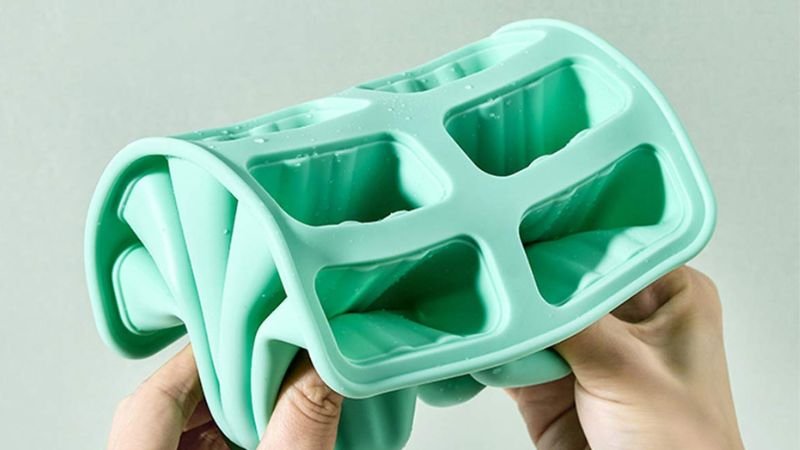Think of silicone molds as the unsung heroes in both craft rooms and industrial settings. They play a crucial role, shaping everything from decorative items to important industrial parts. But there’s one key to keeping these tools in tip-top shape: keeping them clean. It’s not just about making them look good. Proper cleaning ensures they work well and last longer, affecting the quality of everything they make.
In this guide, we’re going to walk you through various ways to clean your silicone molds, from simple to more advanced methods. Whether it’s using just soap and water or dealing with tough stains, we’ve got you covered. Our goal is to give you clear, easy-to-understand advice, making these tips accessible to everyone, no matter their age or experience.
So, let’s dive into the world of silicone mold care. We’ll show you how each cleaning method is not only about making your molds sparkle but also about extending their life and improving their performance. Let’s get started on this journey to keeping your molds in their best condition!
Basic Cleaning Procedure
Maintaining the pristine condition of your silicone molds is as essential as regular upkeep of a cherished tool. The cornerstone of this maintenance is a basic yet effective cleaning procedure, using everyday items like soap and water. Here’s how to keep your molds in top-notch condition, ensuring they are always ready for your next project.
Soap and Water: A Simple Duo
Begin by creating a mild cleaning solution. Mix a few drops of gentle dish soap with warm water – think of it as preparing a relaxing bath for your molds. The warm water helps soften any residues, and the soap acts as a gentle cleanser.
Regular Cleaning Steps
After each use, immerse your silicone mold in this soapy mixture. Gently scrub the surface with a soft sponge or cloth – as tenderly as if you were washing a delicate fabric. This step ensures that no material, be it chocolate or craft resin, remains to harden or stain.
Rinse and Dry
Rinse the mold under running water. Imagine it’s a precious gem being cleansed of the last specks of dust. Then, air-dry it or use a soft, lint-free towel. Ensure it’s completely dry, as any moisture can be a breeding ground for bacteria or mold.
Tips to Avoid Damage
- Avoid abrasive scrubbers or harsh chemicals, which can create scratches or degrade the silicone.
- Don’t expose the silicone mold to extreme temperatures while cleaning.
- Be mindful of the mold’s edges and intricate designs – these areas need gentle handling to maintain their shape and detail.
Proper Storage
Once clean and dry, store your silicone mold in a cool, dry place, shielded from direct sunlight and heat. This is akin to placing a book back on the shelf, away from potential harm, ready for its next use.
By incorporating these simple steps into your routine, you not only preserve the integrity of your silicone molds but also ensure their readiness for whatever creative endeavor comes next.

Using Mold Release Agents
Mold release agents are like a secret weapon for your silicone molds. They’re not just helpful; they’re essential for keeping your molds in top shape and making your work easier. Let’s dive into what they do and how to use them effectively.
Why Use Mold Release Agents?
Think of mold release agents as a protective layer, like a gentle barrier cream for your mold’s skin. They stop materials from sticking to your mold, making it easy to pop out your creations without any struggle. Plus, they keep your molds looking new by preventing wear and tear, especially in those intricate details.
Applying Mold Release Agents the Right Way
- Pick the Right One: It’s like choosing the right tool for a job. Make sure the mold release agent you choose is suitable for both the silicone mold and the material you’re using.
- Clean and Dry First: Before you apply the agent, your mold should be as clean and dry as a new dish out of the box. Any leftover bits or moisture can stop the agent from working properly.
- Apply it Thin and Even: Imagine you’re brushing a thin layer of butter on toast – that’s how you should apply the agent. If it’s a spray, keep it a few inches away from the mold for an even coat.
- Let it Dry Completely: This step is like waiting for paint to dry. It might take a bit of time, but it’s crucial for the best results.
- Clean After Use: Once you’re done with your molding, give the mold a good clean. This keeps any leftover release agent from building up and ensures your mold is ready for next time.
By using mold release agents, you’re not just making your current project easier. You’re also taking care of your silicone molds so they’re ready for all the great things you’ll create in the future.
Advanced Cleaning Techniques
When basic cleaning isn’t enough, especially for those challenging situations like stubborn resin residue, it’s time to employ advanced cleaning techniques. These methods are like the special tools in a toolbox, used for specific problems to ensure your silicone molds stay in prime condition.
Tackling Stubborn Resin Residue
Resin can be a tough opponent, clinging onto your molds like glue. To remove it:
- Freeze the mold for a few hours. This makes the resin less adhesive, a bit like how ice makes gum easier to peel off from surfaces.
- Once frozen, gently flex the mold. The resin should crack and peel away more easily. Think of it as carefully peeling a sticker off a surface.
Safe Use of Heat
Heat can be a great ally in cleaning, but it needs to be used cautiously to avoid damaging the silicone.
- Warm (not hot) water can soften many types of residues. Immerse the mold in warm water for a few minutes, like soaking a dirty dish before washing.
- Avoid direct heat sources like stovetops or open flames. Silicone can withstand heat, but excessive heat can warp or damage it.
Using Acetone or Rubbing Alcohol for Tough Stains
For the most stubborn stains, acetone or rubbing alcohol can be effective. However, use them sparingly and carefully.
- Apply a small amount of acetone or rubbing alcohol to a soft cloth or cotton swab.
- Gently rub the stained area. Imagine you’re removing a stubborn sticker from a glass window, applying just enough pressure to lift the stain without damaging the surface.
- Once the stain is removed, wash the mold thoroughly with soap and water to remove any chemical residues.
Remember, these advanced techniques are for occasional use and not part of your regular cleaning routine. They’re like the special cleaning crew you call in for the toughest jobs, ensuring your silicone molds are not only clean but also preserved for many more uses.

Dos and Don’ts of Silicone Mold Maintenance
Silicone molds are versatile and durable, but like any tool, they require proper care. Here’s a handy list of dos and don’ts to help you keep your molds in the best shape, ensuring they continue to produce flawless results.
Dos: Essential Care Tips
- Do Clean Regularly: Just like brushing your teeth, cleaning your silicone molds after each use is essential. It prevents buildup and maintains the mold’s integrity.
- Do Dry Thoroughly: After washing, ensure your molds are completely dry before storage. It’s like drying off after a shower; moisture left behind can lead to mold or mildew.
- Do Store Properly: Keep your silicone molds in a cool, dry place, away from direct sunlight. Think of it like storing a fine wine in optimal conditions for preservation.
- Do Use Gentle Cleaning Agents: Opt for mild soaps and avoid harsh chemicals. It’s like choosing a gentle shampoo for your hair.
- Do Inspect Regularly: Regularly check for signs of wear or damage, just as you would check your car’s tires for wear.
Don’ts: Common Mistakes to Avoid
- Don’t Use Abrasive Scrubbers: Avoid using harsh scrubbers or scouring pads, which can scratch the silicone. It’s like using a rough brush on a silk fabric.
- Don’t Expose to Extreme Temperatures: While silicone is heat-resistant, extreme temperatures (either hot or cold) can cause damage over time. It’s similar to avoiding extreme weather conditions for certain plants.
- Don’t Store Them Folded or Bent: Store molds flat or in their original shape. Folding or bending can create creases or weaken the mold, like folding a paper repeatedly along the same line.
- Don’t Ignore the Manufacturer’s Instructions: Always refer to the care instructions provided by the manufacturer. It’s like following a recipe to ensure your dish turns out just right.
- Don’t Rush the Drying Process: Avoid using high heat to speed up the drying process. Air drying is the safest method, akin to air-drying delicate laundry.
By following these simple dos and don’ts, you’ll extend the life of your silicone molds, ensuring they remain a reliable and high-quality tool in your crafting or industrial arsenal.
Conclusion
As we wrap up our guide on silicone mold maintenance, let’s quickly recap the essentials. These tips are straightforward but crucial for keeping your molds in great shape and your projects successful.
- Clean Regularly and Gently: Just like washing your hands after a meal, always clean your molds with mild soap and water after each use. And remember to dry them completely.
- Use Mold Release Agents Smartly: Think of these agents like sunscreen for your molds. They prevent sticking and extend the mold’s life but use them correctly and sparingly.
- Handle Tough Residues with Care: For those stubborn bits, like resin, you have special techniques at your disposal. But treat your molds gently, like handling a delicate piece of jewelry.
- Follow the Dos and Don’ts: These are your go-to rules – from avoiding harsh scrubbers to storing the molds properly. It’s like following the care label on a favorite garment.
Remember, taking good care of your silicone molds isn’t just about cleanliness; it’s about ensuring they last longer and perform better. It’s like looking after a valuable tool – the better you treat it, the better it works for you. So, keep these points in mind, and your molds will be ready and in top condition for your next project!